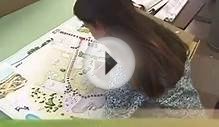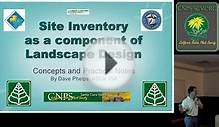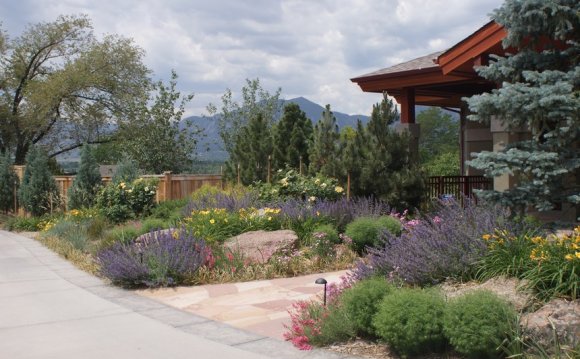
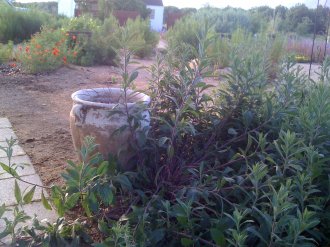 Summer is a great season to plan changes to your garden or an entirely new landscape.
Summer is a great season to plan changes to your garden or an entirely new landscape.
What’s the biggest challenge when trying to determine what plants to use and where to put them? Sometimes organizing the garden scheme can seem overwhelming, especially when one begins with a yard that is already landscaped. Over the years plants may have been placed haphazardly, the results of impulse-buying without structure developed first. Plants may have died, resulting in gaps; other plants may have been wrong for the location in the first place and either struggle without thriving, or have grown too large and are a maintenance nuisance.
A particular challenge faces the home owner who wishes to gradually transition their older established landscape into a fresher, more climate-appropriate and
native plant-based garden. Where to begin?
Understanding design elements will prove valuable whether you choose to hire a professional to assist you or choose the DYI model. You’ve probably heard of the basic design elements. They include purpose (a.k.a. function), repetition, simplicity and interest. To this, I’ll suggest a few other, very practical, considerations.
The purpose or function of the garden is the primary element and can help you decide even if more plants are needed. Maybe they are not.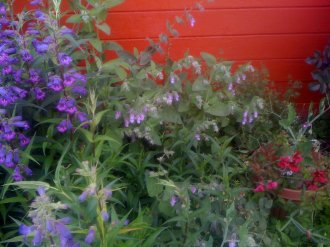 Maybe what you really need is an area for entertaining, which might lead to a deck or a pea-gravel or flagstone patio, or maybe you need more circulation, which might lead to paths or sidewalks, or maybe you need more outdoor storage or garden work areas. “Looking good, ” is not a purpose. “An area that makes me feel happy whenever I see it, especially in the summer, ” might be one. “My garden should support native bees, ” is another. “This area of my garden would be a good place for the kids to play because I can watch them from this window, except all these bushes block my view, ” is another example. Even small yards have several different areas, each with their own function, so answer this question first before you do anything else.
Maybe what you really need is an area for entertaining, which might lead to a deck or a pea-gravel or flagstone patio, or maybe you need more circulation, which might lead to paths or sidewalks, or maybe you need more outdoor storage or garden work areas. “Looking good, ” is not a purpose. “An area that makes me feel happy whenever I see it, especially in the summer, ” might be one. “My garden should support native bees, ” is another. “This area of my garden would be a good place for the kids to play because I can watch them from this window, except all these bushes block my view, ” is another example. Even small yards have several different areas, each with their own function, so answer this question first before you do anything else.
The next two, repetition and simplicity, are particularly important if your garden seems too busy, unfocused, kind of a mish-mash of plants. I often find that design work is ruthlessly imposing simplicity on a garden, creating a structure, which can allow later impulse-buying and working with annuals, without creating chaos or loss of focus. As you consider the major plants: trees, shrubs and larger perennials, aim for simplicity in all choices. Use fewer species, repeat a few of them throughout the garden. It’s harder to tone things down later; far easier to jazz things up.
That leads to another element: interest. Planting in masses, and sweeps of plants can create vista effects. If the garden is small, interest can be combined with simplicity by using primarily one species—say a group of dark green California Coffeeberry shrubs—with one or two plants that contrast sharply, perhaps one Artemesia ‘Powis Castle, ’ or a few Salvia ‘Bee’s Bliss’ (choose one, not both.) Each of these has light foliage, are more compact and lower growing than the Coffeeberry.
 Interest can also be created by varying foliage type and plant form. Try to think beyond flowers. Also consider in what season each plant will provide its greatest impact, in order to have something interesting in the garden throughout the year. You only need a little interest; not every plant has to be a focal point, and no plant need be interesting year-round.
Interest can also be created by varying foliage type and plant form. Try to think beyond flowers. Also consider in what season each plant will provide its greatest impact, in order to have something interesting in the garden throughout the year. You only need a little interest; not every plant has to be a focal point, and no plant need be interesting year-round.
When revamping an established garden, don’t be afraid to remove plants. Some plants can be moved to an area where they work better, especially where large plants were placed in small spaces, or if the new function just isn’t supported by the existing vegetation. If possible, I always try to save healthy plants that are suitable to our climate, and often plants can be real stars instead of annoyances when relocated to a more suitable place. However, if there are plants that you don’t like, even if they are healthy, consider removing them entirely. Try to find them a new home with friends if you can, or if appropriate, chip them up and use the mulch in the new garden. If any plants are severely pest-infected, or are structurally unsafe, they should be removed or remedied.
The next practical basic is to “know your plants.” There are lots of resources in print and online for learning about even the less-familiar California native plants. Once you determine function, you can more easily define things like, “I need a four-foot California native evergreen shrub or perennial which has flowers that hummingbirds like.” A bit of research will tell you that Lilac Verbena, Red Fairy Duster, Desert Peach, Yellow Bush Monkeyflower, ‘Sunset’ Manzanita and Black Sage all fit this general description. Then, understanding your site–things like climate, soil, aspect and wind– can help narrow the choices.
At this point, but not before, your personal style or preference makes the final decision. Ultimately, the design process is a creative one, but to end with a successful creative choice, and a long-lasting satisfying garden, it helps to start with this logical, step-by-step process. Happy Designing!
YOU MIGHT ALSO LIKE
